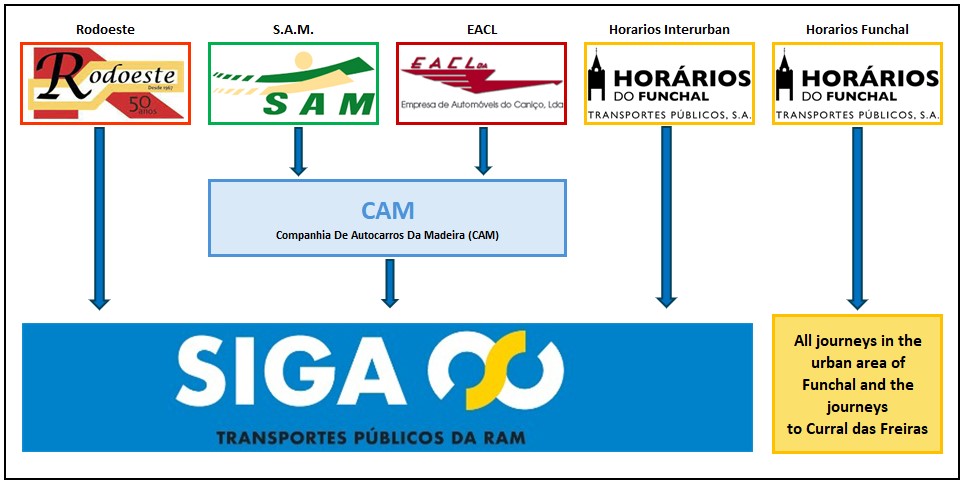
SIGA – Everything Under One Roof Now
The Beginning
Public bus transportation on Madeira has a long and interesting history, closely tied to the island’s economic and infrastructural development. Until the 20th century, Madeira was dominated by agricultural activities, particularly wine and sugar production. At that time, transportation within the island was a challenge, as the steep slopes and rough roads made access to remote areas difficult.
The first public transport services on Madeira emerged in the early 1900s, when horse-drawn carriages were the only means of transporting people and goods. By the 1920s, motorized buses were introduced, significantly easing and modernizing transport. Funchal, the capital, played a central role, as most bus routes originated there.
Expansion in the 20th Century
With Madeira’s economic development, especially through growing tourism, the bus system on the island became increasingly important. In the 1950s and 1960s, public transport experienced a major boom, with several private bus companies being established, specializing in transporting locals and tourists alike.
Two of the most well-known companies that still exist today are Horários do Funchal, which mainly focuses on city traffic in Funchal, and Rodoeste, which covers the west of the island. These companies made remote areas more accessible and improved the mobility of the local population.
Modernization and Sustainability
In recent years, Madeira’s public transportation has been modernized. Newer, more environmentally friendly buses have been introduced to meet the demands of growing tourism and environmental protection efforts. At the same time, the network has been expanded to reach even more villages and regions.
Until June 30, 2024, four companies were responsible for public bus services on Madeira. A simplified overview:
- Rodoeste: Routes from Funchal to the southwest, west, and northwest, up to Arco de São Jorge
- S.A.M.: Routes from Funchal to the east, up to Caniçal
- Horários do Funchal: Serving the Funchal area, Ribeiro Frio, and the north between Arco de São Jorge and Santana
- EACL: Routes between Funchal and Caniço
On July 1, 2024, all regional bus services (everything outside Funchal) were consolidated under the umbrella organization SIGA. As part of this, the online timetables of individual bus companies were discontinued and are now only available in limited form online.
The goal of this „friendly takeover“ is to create unified structures, such as better fare management (previously, separate tickets had to be purchased for each bus company). As shown in the graphic, the SIGA network serves as the umbrella organization and is operated by three concessionaires: Companhia de Autocarros da Madeira (CAM), Siga Rodoeste, and Horários do Funchal (HF).
Foresight
Today, Madeira’s buses are considered one of the best ways to explore the island. They offer an affordable alternative to renting a car and allow tourists an authentic insight into the island’s diverse landscapes and cultural highlights. The bus system helps reduce traffic and protect the environment.
Find out more in the guide: Madeira by Bus


